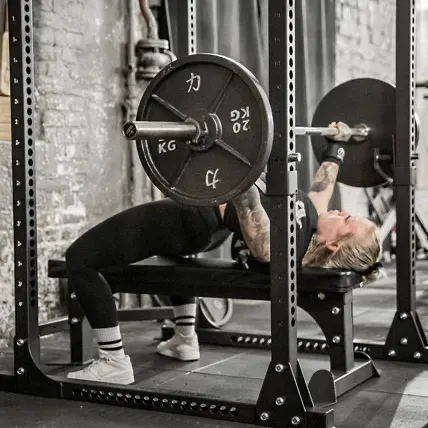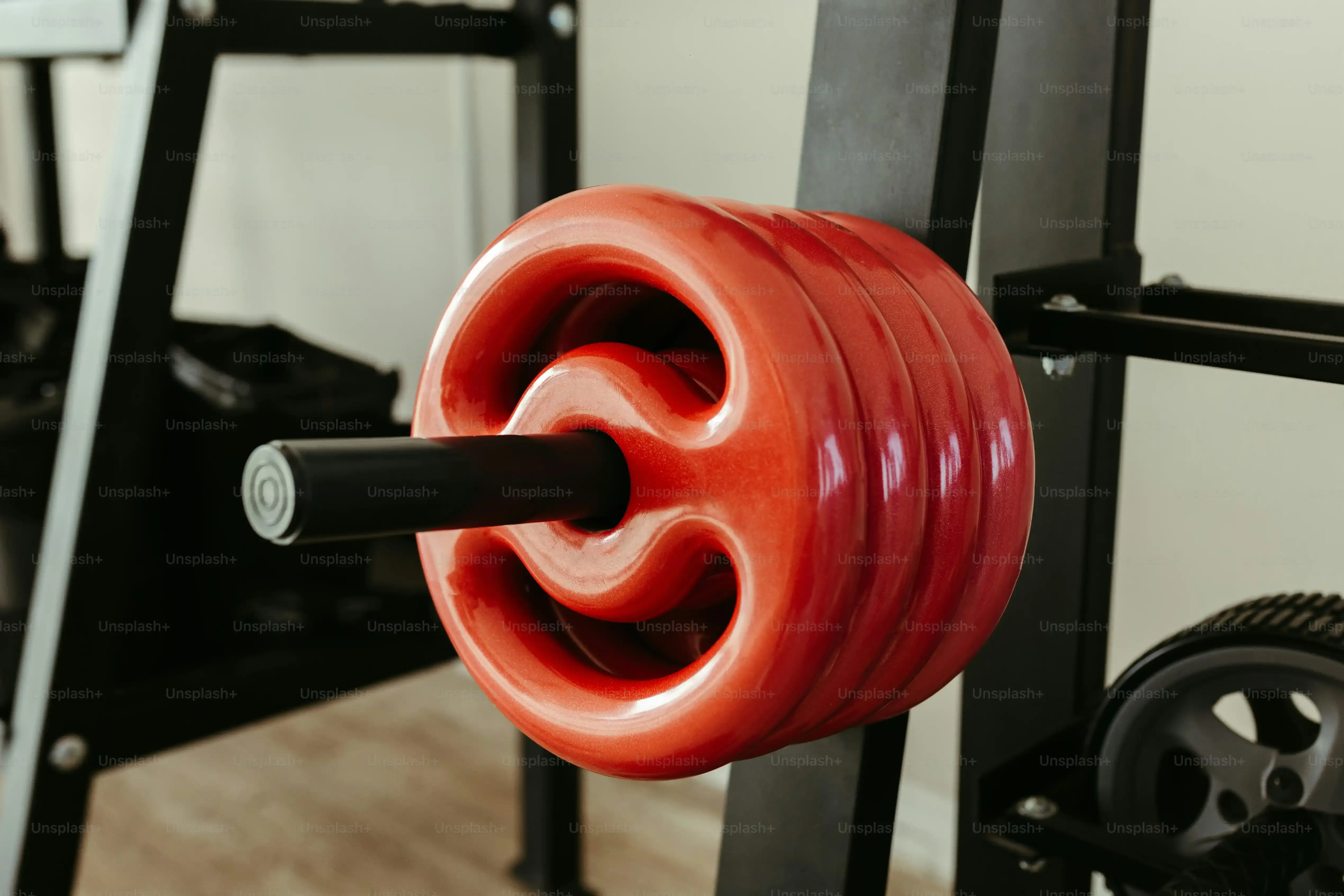Table of Contents
So, you're thinking about building out a home gym? Maybe you're tired of crowded commercial spaces, or perhaps life just makes getting out the door a hassle. Whatever the reason, bringing fitness into your own space is a smart move, and at the heart of many effective setups is the humble yet mighty barbell. Getting the right home gym equipment barbell is often the first big decision for serious strength training at home. It's not just a metal bar; it's the foundation for squats, deadlifts, presses, and countless other exercises that build real strength and muscle.
Why a Barbell is Key Home Gym Equipment
Why a Barbell is Key Home Gym Equipment
More Bang for Your Buck (and Space)
Look, if you're setting up a home gym, space and budget are usually the first things you think about. You could fill a room with machines that isolate one muscle group at a time, or you could get one piece of home gym equipment that does it all. That's where the barbell comes in. It's the original compound movement tool. You want to squat heavy? Barbell. Deadlift? Barbell. Bench press? You guessed it. Military press? Absolutely. One simple bar opens up a universe of exercises that work multiple muscle groups simultaneously, meaning you get more efficient workouts and build functional strength faster than fiddling with half a dozen single-purpose machines. It’s foundational, plain and simple.
The King of Progressive Overload
Building strength isn't just about lifting; it's about consistently challenging your muscles with more weight over time. This is called progressive overload, and very little home gym equipment makes it as straightforward as a barbell. You simply slide on another plate. Adding weight to a barbell is usually done in small increments, often as little as 2.5 or 5 pounds per side, allowing for smooth, consistent progress week after week. Trying to add just a few pounds to a dumbbell set or a resistance band can be awkward or impossible. A good home gym equipment barbell system, with a decent set of plates, gives you that crucial ability to keep pushing your limits in a controlled way.
So, why prioritize a barbell? Here's the quick rundown:
- Versatility: Hits major muscle groups with compound lifts.
- Efficiency: Get more work done with less equipment.
- Progressive Overload: Easy to add weight in small increments.
- Foundation: Builds a base for all other strength training.
- Cost-Effective: Less expensive than multiple machines.
Choosing the Right Home Gym Equipment Barbell for You
Choosing the Right Home Gym Equipment Barbell for You
Olympic vs. Standard: Picking Your Home Gym Equipment Barbell Type
Alright, let's talk specifics. When you're diving into the world of home gym equipment barbell shopping, the first big fork in the road is usually "Olympic" versus "standard." Standard bars are thinner (around 1 inch diameter) and typically shorter, often found with spin-lock collars and less expensive plates. They're okay for light work or beginners on a tight budget, but frankly, they have limitations. Olympic bars are the gold standard (pun intended) for serious lifting. They have a 2-inch diameter sleeve, are usually 7 feet long (though shorter versions exist), weigh either 20kg (45 lbs) for men's bars or 15kg (35 lbs) for women's bars, and use larger, heavier-duty plates with a 2-inch hole. Olympic bars are built to handle much more weight and are far more durable. If you plan on lifting anything substantial or want equipment that will last, an Olympic home gym equipment barbell is the way to go.
Features That Matter: Knurling, Whip, and Spin
Beyond just the type, a good home gym equipment barbell has specific features that make a difference in how it performs and feels. Knurling is the crosshatch pattern etched into the bar; this is where you grip it. Good knurling provides a secure hold without tearing up your hands too much. Some bars have center knurling (for back squats), others don't (better for cleans or high-rep work). "Whip" refers to how much the bar bends under heavy weight and springs back; this is crucial for dynamic lifts like cleans and jerks, where the bar's momentum helps. For general strength work like squats and deadlifts, less whip is fine. Finally, the sleeves (where the plates go) should spin smoothly. This prevents torque on your wrists and elbows during lifts like cleans. Look for bars with quality bearings or bushings for a smooth spin. Paying attention to these details ensures your home gym equipment barbell is suited to your lifting style and goals.
- **Material:** Look for high-strength steel.
- **Knurling:** Check the pattern and aggression level.
- **Whip:** Consider your lifting style (dynamic vs. static).
- **Spin:** Bushings or bearings for smooth sleeve rotation.
- **Weight Capacity:** Ensure it meets your potential future strength.
- **Length/Weight:** Standard (1" sleeves, various lengths) vs. Olympic (2" sleeves, 7ft/20kg or 6.5ft/15kg common).
Budget and Buying Your Home Gym Equipment Barbell
let's talk money. A quality home gym equipment barbell is an investment. You can find cheap bars for under $100, but they often have low weight capacities, poor knurling, and won't last. A solid, reputable Olympic bar for general training usually starts in the $200-$400 range. If you're into competitive powerlifting or Olympic lifting, you might look at specialty bars costing $500 or more. Don't cheap out too much here; a bad bar can be frustrating or even unsafe. Look at reviews from trusted sources (like garage gym review sites, not just Amazon reviews). Buying from a specialty fitness equipment retailer or a well-known brand is often a safer bet than a general sporting goods store. Sometimes, you can find good deals on used equipment, but inspect it carefully for bends or damage.
Beyond the Barbell: Essential Home Gym Equipment Accessories
Beyond the Barbell: Essential Home Gym Equipment Accessories
Plates: The Fuel for Your Home Gym Equipment Barbell
you've got the bar. Nice. But unless you plan on just practicing your grip strength with an empty pipe (which, honestly, isn't a terrible warm-up), you're going to need some weight plates. These are the bread and butter, the actual resistance you'll load onto your home gym equipment barbell. You've got options here too: iron plates (classic, durable, can be noisy), bumper plates (rubber or urethane, great for deadlifts or Olympic lifts because you can drop them without destroying your floor or the plates), or even competition plates (super accurate weight, super expensive). For most home gyms, a mix of iron and perhaps a pair of bumper plates for deadlifts is a solid starting point. Don't forget fractional plates either – those tiny ones (0.25kg, 0.5kg, 1kg) that let you make micro-adjustments and keep that progressive overload chugging along when bigger jumps are too much. Skimping on plates means you'll quickly outgrow your setup.
Racks and Benches: Your Barbell's Best Friends
Holding the bar is one thing; lifting it safely is another. Unless you only plan on doing deadlifts and curls (and please, for the love of gains, don't *only* do curls), you need a rack and a bench. A squat rack or power cage provides safety pins or straps so you don't get pinned under a heavy squat or bench press. Trying to bench press heavy weight without safety spotters is like trying to pet a badger – it might work out, but the potential downside is catastrophic. A good, sturdy bench is also non-negotiable for presses and rows. Look for something stable, with minimal wobble. Adjustable benches offer more exercise variety. These pieces aren't just 'nice-to-haves'; they're essential safety equipment for anyone serious about using their home gym equipment barbell effectively and avoiding a trip to the ER. Think of them as the supporting cast that lets your barbell be the star.
So, what absolutely needs to be on your list after the barbell?
- Weight Plates (Iron, Bumper, or a mix)
- Collars (to keep plates on the bar – spring clips are okay, locking collars are better)
- Squat Rack or Power Cage (for safety and versatility)
- Weight Bench (flat or adjustable)
- Flooring Protection (rubber mats save your floor and equipment)
Making the Most of Your Home Gym Equipment Barbell Setup
Making the Most of Your Home Gym Equipment Barbell Setup
Programming Your Progress with Your Home Gym Equipment Barbell
you've assembled your fortress of solitude, complete with your shiny new home gym equipment barbell. Now what? Don't just stare at it. The real magic happens when you apply some structure. Randomly lifting weights won't get you far. You need a plan. This means following a structured program designed around barbell movements. Whether it's a simple linear progression for beginners (like adding a small amount of weight each session) or something more complex, consistency is king. Track your lifts – weight, sets, reps. This isn't just busywork; it’s how you know you're actually making progress and when to push harder or back off. Think of your barbell as a tool, and your program as the blueprint for building something substantial. Without the blueprint, you're just moving heavy things around.
Technique, Safety, and Consistency: The Unsexy Essentials
Lifting heavy things is cool, but lifting heavy things *correctly* is how you stick around long enough to get strong without breaking yourself. Perfecting your form on key lifts like the squat, deadlift, bench press, and overhead press is non-negotiable when using your home gym equipment barbell. Watch videos from reputable coaches, film yourself, or even invest in a few sessions with a good trainer to nail down the basics. Bad form with heavy weight isn't just inefficient; it's a fast track to injury. Use your safety pins on the rack – that's why they're there. Don't be a hero and try to grind out reps you know you can't finish safely. And finally, consistency. Showing up three days a week, every week, even when you don't feel like it, is more important than hitting a massive PR once every six months. The home gym equipment barbell is ready when you are; it's up to you to show up.
So, how do you ensure your home gym equipment barbell setup is paying off?
- Follow a structured lifting program.
- Track your weight, sets, and reps diligently.
- Prioritize perfect technique over lifting maximum weight.
- Always use safety features like rack pins.
- Be consistent with your training schedule.
- Film your lifts occasionally to check form.
Wrapping Up Your Home Gym Barbell Setup
Look, building a home gym, especially centered around a barbell, isn't magic. It takes research, a bit of cash, and making choices based on reality – your space, your budget, and what you actually plan to lift. Picking the right home gym equipment barbell is a necessary step, not a finish line. It’s about setting yourself up for consistent work, day in and day out, without the excuses of weather or commute. Get the right gear, use it consistently, and the results tend to follow. It’s less about inspiration and more about showing up.